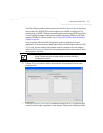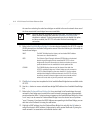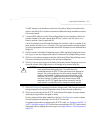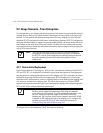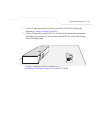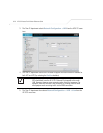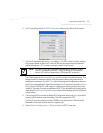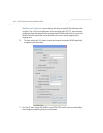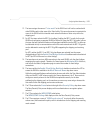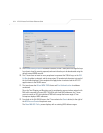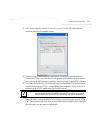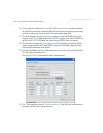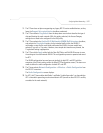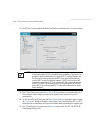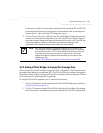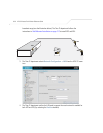
Configuring Mesh Networking
9-23
12. The team assigns the name of “trion mesh” to the WLAN so it will not be confused with
other WLANs used in other areas of the Trion facility. This name also serves to associate the
name of the WLAN with its intended mesh network utilization of data. entry within the
shipping yard
13. For AP1 the team selects the 802.11a checkbox. Enabling the 802.11a radio for the mesh
WLAN and configuring a separate WLAN for MU traffic (using the 802.11b/g radio), allows
the team the best channel utilization and throughput available since the 802.11a radio can
be dedicated strictly to communications within the mesh network and the 802.11b/g radio
can be dedicated to servicing the 802.11b/g MUs supporting the shipping and receiving
yard.
For AP2, neither the 802.11a or 802.11b/g checkboxes are selected (see the screen
displayed above). Only the Enable Client Bridge Backhaul checkbox needs to be selected
for AP2 (as AP2 will be used as a client bridge).
14. The team does not want any MUs connecting to the mesh WLAN, only the client bridges
comprising the mesh network. Therefore, the team leaves the Maximum MUs field as is,
and will use the Radio Configuration page to control the number of client bridge
connections.
15. The team verifies the Enable Client Bridge Backhaul checkbox is selected for AP2 to
ensure the WLAN is available in the Mesh Network Name drop-down menu.
Unlike the user-based Kerberos authentication scheme used within the Trion Administrative
office and the 802.1x EAP scheme used in the Finance department, the IT Team wants to
configure a security scheme for the WLAN that emphasizes security for the data
proliferating the shipping yard, not its user base, as users may come and go whereas the
data traffic within the shipping yard remains continuous.
16. The IT Team selects the Create button to the right of the Security Policy drop-down menu.
The New Security Policy screen displays with no authentication or encryption options
selected.
17. The IT Team selects the WPA2/CCMP radio button.
The WPA2/CCMP Settings field displays within the New Security Policy screen.
18. The IT Team assigns a name of “WPA2 mesh network” to not only define the security
scheme used, but associate this policy with its intended use for the shipping and receiving
mesh network.



